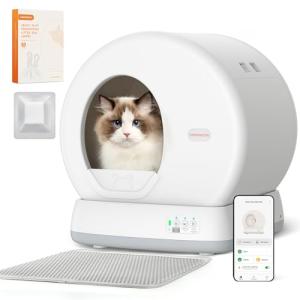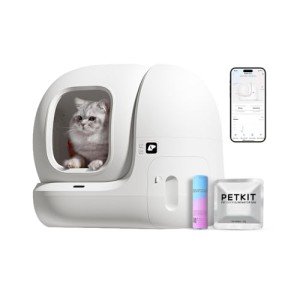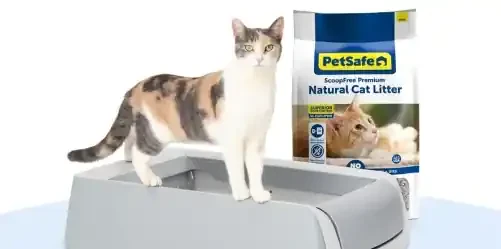Cat Litter and Pregnancy: Understanding The Risks Of Toxoplasmosis
Toxoplasmosis is a parasitic infection caused by the microscopic organism Toxoplasma gondii. This parasite is found worldwide and can infect a wide range of warm-blooded animals, including cats, but its primary host is the feline.
Cats typically become infected with Toxoplasma gondii by eating infected prey, such as rodents or birds, or through contact with contaminated soil or water. Once infected, cats shed the parasite's eggs, called oocysts, in their feces. These oocysts can survive in the environment for months, posing a potential risk to humans and other animals.
Pregnant women are particularly vulnerable to toxoplasmosis because the parasite can cross the placenta and infect the developing fetus. This can lead to severe complications for the unborn baby, including miscarriage, stillbirth, premature birth, low birth weight, and birth defects. The most common birth defects associated with congenital toxoplasmosis are brain damage, hydrocephalus (fluid buildup in the brain), and eye problems.
The risk of transmission and severity of the infection vary depending on the stage of pregnancy at which the mother becomes infected. The earlier in pregnancy the infection occurs, the more severe the potential consequences for the baby. However, even late-stage infections can lead to significant health problems.
Toxoplasmosis is relatively common in cats, with estimates suggesting that up to 40% of cats have been exposed to the parasite at some point in their lives. However, not all infected cats shed oocysts, and the risk of transmission to humans is relatively low. The parasite is also found in the environment, with contaminated soil and water being common sources of infection.
Early detection and treatment of toxoplasmosis are crucial for pregnant women and their babies. If a pregnant woman is diagnosed with toxoplasmosis, there are medications that can significantly reduce the risk of transmission to the fetus and minimize the severity of the infection. Regular prenatal care and testing can help identify and manage toxoplasmosis early on, providing the best possible outcome for both mother and child.
Can Pregnant Women Change Cat Litter?
The question of whether pregnant women can safely change cat litter is a common concern, and the answer is not a simple yes or no. While the risk of contracting toxoplasmosis from cat litter is relatively low, it is not nonexistent, and certain precautions should be taken to minimize this risk during pregnancy.
Assessing the risks involved is crucial for pregnant women who own cats. While toxoplasmosis can be transmitted through contact with contaminated cat feces, the primary risk comes from ingesting the parasite's oocysts. These oocysts are shed in cat feces and can become airborne when the litter box is cleaned, potentially leading to inhalation or accidental ingestion.
Pregnant women can reduce the risk of exposure by following specific guidelines and precautions when changing cat litter. These include wearing disposable gloves, washing hands thoroughly afterward, avoiding touching the face while cleaning the litter box, and cleaning the litter box daily. Daily cleaning is essential because oocysts take at least 24 hours to become infectious after being shed in the feces.
If the risk is deemed too high, there are alternatives to changing cat litter during pregnancy. These include asking a partner, family member, or friend to take over litter box duties or hiring a professional pet sitter. Some women choose to temporarily relocate their cats to a separate area of the house or even board them at a kennel for the duration of their pregnancy.
Regardless of the chosen approach, it is important for pregnant women to consult with their healthcare provider to discuss their individual risk factors and receive personalized advice on managing their cat ownership during pregnancy. This may involve getting tested for toxoplasmosis, discussing preventive measures, and creating a plan to ensure the safety of both mother and baby.
In some cases, healthcare providers may recommend additional precautions, such as avoiding contact with stray or outdoor cats, wearing gloves when gardening, and thoroughly washing hands after handling raw meat. These measures can further reduce the risk of exposure to toxoplasmosis and provide peace of mind for pregnant women.
Choosing The Safest Cat Litter For Pregnant Women
Selecting the right cat litter is crucial for pregnant women who want to minimize their risk of exposure to toxoplasmosis while still providing a comfortable and hygienic environment for their feline companions. Several factors should be considered when choosing cat litter during pregnancy, including the type of litter, its composition, and its safety features.
There are various types of cat litter available, each with its own advantages and disadvantages. Some popular options include clay litter, silica gel litter, recycled paper litter, and natural litters made from materials like wood, corn, or wheat. While all of these options can be safe for pregnant women if handled properly, some may offer additional protection against toxoplasmosis.
One of the key decisions is whether to use clumping or non-clumping cat litter. Clumping litter is generally considered more convenient as it forms solid clumps that can be easily scooped out, leaving the rest of the litter clean. However, it is important to note that clumping litter may pose a slightly higher risk of toxoplasmosis transmission if ingested, as the clumps can harbor the parasite's oocysts.
Another important consideration is the choice between clay and natural cat litter. Clay litter is a popular and affordable option, but it can be dusty, which may increase the risk of inhaling oocysts. Natural litters, on the other hand, are typically less dusty and made from biodegradable materials, making them a more environmentally friendly choice. However, some natural litters may not be as effective at controlling odor or clumping as clay litters.
When choosing cat litter for pregnant women, it is important to look for specific features that enhance safety and minimize the risk of toxoplasmosis. These features may include:
Low Dust: Choose a litter that produces minimal dust to reduce the risk of inhaling oocysts.
Non-Clumping: Opt for non-clumping litter to avoid the potential risk of ingesting oocysts in clumps.
Natural Ingredients: Consider litters made from natural materials like wood, corn, or wheat, as they are often less dusty and more environmentally friendly.
Antimicrobial Properties: Look for litters with added antimicrobial agents that can help inhibit the growth of bacteria and parasites.
Several brands of cat litter are considered safe for pregnant women, including Dr. Elsey's Ultra, Boxiecat, World's Best, and sWheat Scoop. These brands offer a variety of options with low dust, non-clumping formulas, and natural ingredients, making them suitable choices for expectant mothers.
Ultimately, the best cat litter for pregnant women is one that meets their individual needs and preferences while minimizing the risk of toxoplasmosis. By carefully considering the available options and consulting with their healthcare provider, pregnant women can make informed decisions about cat litter that prioritize the health and safety of both themselves and their babies.
Safe Cat Litter Box Practices For Pregnant Women
Maintaining a clean and hygienic litter box is essential for the well-being of both cats and their owners, especially during pregnancy. Pregnant women can significantly reduce the risk of toxoplasmosis transmission by following specific practices regarding litter box cleaning, placement, and hygiene.
Frequency of litter box cleaning is a critical factor in preventing the buildup of Toxoplasma gondii oocysts. It is recommended that pregnant women (or someone else in the household) clean the litter box daily, as oocysts become infectious after 24 hours. Scooping out waste and replacing soiled litter daily will help minimize the risk of exposure to the parasite.
Proper litter box cleaning techniques are equally important for pregnant women. Wearing disposable gloves and a mask while cleaning the litter box can provide an additional layer of protection. After scooping and disposing of the waste, the litter box should be thoroughly washed with hot water and soap, then disinfected with a solution of 10% bleach and water. It is important to rinse the box thoroughly after disinfecting and allow it to dry completely before adding fresh litter.
Choosing the right location for the litter box can also help reduce the risk of toxoplasmosis transmission. The litter box should be placed in a well-ventilated area away from food preparation and dining areas. Ideally, it should be located in a room that is not frequently used by the pregnant woman, such as a laundry room or spare bathroom.
Maintaining good litter box hygiene involves more than just cleaning it regularly. Pregnant women should avoid stirring up dust while scooping, as this can release oocysts into the air. Using a litter scoop with a solid bottom can help minimize dust and prevent accidental spills. Additionally, it is important to wash hands thoroughly with soap and water after handling the litter box or coming into contact with cat feces.
Using litter box liners and other protective measures can further reduce the risk of toxoplasmosis transmission. Litter box liners can help prevent the parasite's oocysts from coming into contact with the bottom of the box, making cleaning easier and more hygienic. Additionally, wearing gloves and a mask while cleaning the litter box can provide an added layer of protection against accidental ingestion or inhalation of oocysts.
Additional Precautions For Pregnant Women With Cats
While the previous sections have focused on safe cat litter practices, there are additional precautions pregnant women with cats should take to minimize their risk of exposure to toxoplasmosis. These precautions extend beyond the litter box and encompass various aspects of daily life, including interactions with cats, food handling, and outdoor activities.
One of the most important precautions is minimizing exposure to stray or outdoor cats. These cats are more likely to be infected with Toxoplasma gondii due to their hunting habits and contact with contaminated soil or prey. Pregnant women should avoid petting, feeding, or interacting with stray or outdoor cats, as this can increase the risk of transmission. If a stray cat enters the home, it should be removed immediately, and any areas where the cat may have defecated should be thoroughly cleaned and disinfected.
Food safety is another crucial aspect of toxoplasmosis prevention during pregnancy. Pregnant women should avoid eating raw or undercooked meat, as this is a common source of Toxoplasma gondii infection. All meat should be cooked to a safe internal temperature, and hands, cutting boards, and utensils should be washed thoroughly after handling raw meat. It is also important to wash all fruits and vegetables thoroughly to remove any potential contamination from soil or cat feces.
Gardening and outdoor activities can also pose a risk of exposure to Toxoplasma gondii. Pregnant women should wear gloves when gardening or handling soil, as the parasite's oocysts can survive in the environment for extended periods. After gardening, it is essential to wash hands thoroughly with soap and water to remove any potential contamination.
If possible, pregnant women should ask someone else to clean the litter box or handle other tasks that may involve exposure to cat feces. This could be a partner, family member, friend, or professional pet sitter. If no one else is available to help, pregnant women should take extra precautions, such as wearing gloves and a mask, to minimize their risk of exposure.
In addition to these precautions, pregnant women should maintain good personal hygiene by washing their hands frequently throughout the day, especially before eating or preparing food. It is also important to keep the home clean and free of clutter, as this can help reduce the risk of accidental ingestion of oocysts that may be present in dust or on surfaces.
Addressing Common Concerns And Misconceptions
The topic of cat litter and pregnancy is often surrounded by misconceptions and anxieties, leading to unnecessary stress for expectant mothers. It is important to address these common concerns and debunk myths to provide accurate information and reassurance.
One of the most prevalent myths is that all cats carry toxoplasmosis and pose a significant risk to pregnant women. While it is true that cats can be infected with the parasite, not all cats shed oocysts, and the risk of transmission to humans is relatively low. Additionally, indoor cats that are fed commercial cat food and do not hunt prey are less likely to contract toxoplasmosis than outdoor cats.
Another common misconception is that pregnant women must get rid of their cats to avoid toxoplasmosis. This is not necessary, as simple precautions like those mentioned in previous sections can significantly reduce the risk of transmission. Pregnant women can safely cohabitate with their feline companions by following proper hygiene practices and minimizing exposure to cat feces.
Some people may wonder if indoor cats can still contract toxoplasmosis. While the risk is lower for indoor cats, it is not impossible. Indoor cats can come into contact with the parasite through contaminated soil brought in on shoes or through contact with other infected animals, such as rodents or insects. Therefore, it is still important to take precautions even with indoor cats.
Communicating with family and friends about concerns regarding cat ownership during pregnancy can be challenging. Some people may not be aware of the risks or may have outdated information. It is important to have open and honest conversations, share reliable information from reputable sources, and explain the precautions being taken to minimize the risk of toxoplasmosis.
Seeking support from online communities and forums can be beneficial for pregnant women with cats. These platforms provide a space to share experiences, ask questions, and receive advice from other cat owners and expectant mothers who have faced similar challenges. Connecting with others who understand the situation can provide valuable support and reassurance during pregnancy.
When To Seek Medical Advice
While most pregnancies involving cat ownership proceed without complications, it is essential to be aware of the signs and symptoms of toxoplasmosis and seek medical advice when necessary. Early detection and treatment are crucial for minimizing the potential risks to both the mother and the developing fetus.
Pregnant women should be vigilant for any signs or symptoms that may indicate a toxoplasmosis infection. These can include flu-like symptoms such as fever, muscle aches, fatigue, headache, sore throat, and swollen lymph nodes. However, it is important to note that many people infected with Toxoplasma gondii experience no symptoms at all or have very mild symptoms that can be easily overlooked.
If a pregnant woman experiences any suspicious symptoms, she should contact her healthcare provider immediately. A simple blood test can determine if she has been infected with the parasite. If the test is positive, further testing may be necessary to determine the severity of the infection and the risk to the fetus.
Several treatment options are available for toxoplasmosis, depending on the stage of pregnancy and the severity of the infection. In some cases, antibiotics may be prescribed to reduce the risk of transmission to the fetus and minimize the impact of the infection. If the infection is severe or occurs late in pregnancy, other medications may be necessary to treat the baby after birth.
Regular prenatal checkups are essential for all pregnant women, but especially for those who own cats or have been exposed to risk factors for toxoplasmosis. These checkups provide an opportunity for healthcare providers to monitor the health of both mother and baby, identify any potential problems early on, and provide appropriate treatment and counseling.
In some cases, pregnant women may be referred to specialists for further evaluation and management of toxoplasmosis. These specialists may include infectious disease doctors, obstetricians with expertise in high-risk pregnancies, and neonatologists who specialize in the care of newborns. Consulting with specialists can provide pregnant women with access to the most up-to-date information and treatment options, ensuring the best possible outcome for themselves and their babies.
Summary
The article comprehensively covers the topic of cat litter and pregnancy, addressing concerns about toxoplasmosis. It provides a detailed understanding of the parasite, its transmission, and the risks it poses to pregnant women and their babies. Additionally, it offers guidance on safe cat litter practices, alternative solutions for litter box maintenance during pregnancy, and additional precautions expectant mothers can take to minimize their risk of exposure. The article also dispels common misconceptions and anxieties surrounding cat ownership during pregnancy, providing accurate information and reassurance for expectant mothers.
Disclaimer
The information provided in this article is intended for informational purposes only and should not be considered a substitute for professional medical advice. Always consult with your doctor or other qualified healthcare provider before making any decisions regarding your pregnancy or cat ownership.






